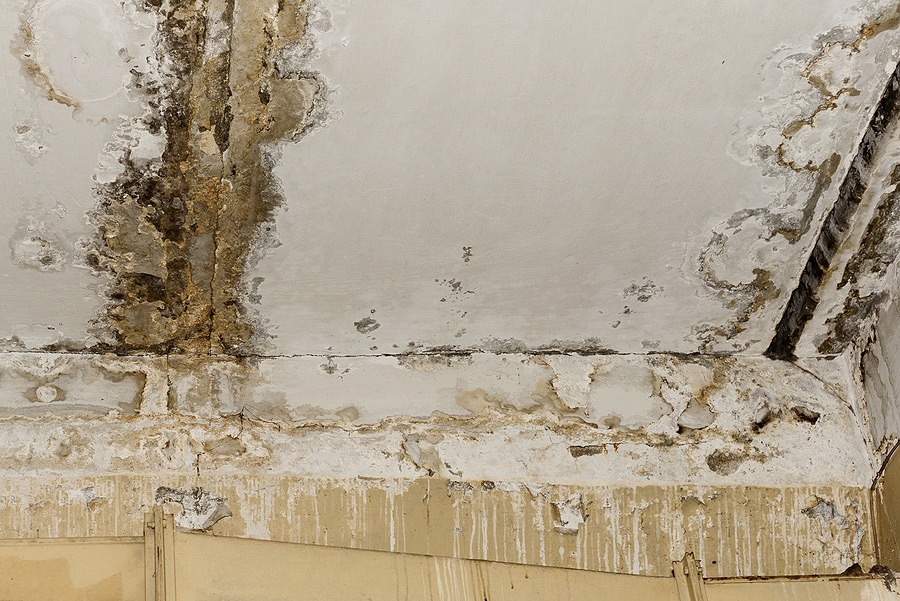

Water damage from a flood or a leaky roof can be a significant concern for property owners. The water itself can short out electrical systems, stain or damage drywall, and even weakening a structure if it is not dealt with.
However, there is a secondary effect to water in a building that is no less risky. In some cases, it may even be considered a more significant threat than the physical damage of water itself. That is the formation of mold.
Why is mold considered a risk?
First, it’s important to understand mold; specifically, the spores are likely already in an environment. Mold spores are nearly microscopic, drifting in the air and settling down on our shoes, skin, clothing, or coming in on the breeze with every opened door or window.
Unless a property owner takes extreme measures, with NASA-like decontamination procedures, odds are mold is already in a structure, just looking for the right conditions.
This is why if bread is left out for too many days, mold forms. The specific bread mold was already there, but it needed the environment created by old bread to settle down and form a colony or infestation to start breeding in larger numbers.
The Water Risk
Different molds have different requirements before growing into a major infestation. While some molds like bread or orange molds require old food, others require specific amounts of light and temperature. Some molds, for example, need a cool, damp, dark environment.
This is precisely the type of environment that can be created by water damage. Without an inspection of a leaky roof, a slab leak, or a crack in a foundation, water may come into a space, creating the conditions that mold need. If this goes on for too long, as the moisture from the water penetration spreads, it also makes more and habitable “real estate” for the mold to distribute.
Why It Matters
The biggest threat that mold presents are not physical damage—though it can do this—but of medical and health risks. Some types of mold are toxic to humans, and when a mold infestation takes hold, it sends more spores out into the air.
For someone that spends a lot of time in a building with molds, such as a resident, an employee, or even management, this means hours of breathing in spores.
Some of these spores can eventually lead to neurological issues, such as impaired reflexes and respiratory problems, especially if chronic respiratory conditions are already factors, such as asthma and even heart conditions or brain disorders.
Mold is also challenging to get rid of. Taking some retail cleaning product and wiping off a mold stain from a wall, for example, is not sufficient. Just because you can’t see a mold stain anymore doesn’t mean that the mold is gone and is likely to grow back.
Call Us For Professional Mold Remediation Near You
If you want to make a building safe for residents or employees again, the best option is to hire professionals like First Call 24/7 for a comprehensive mold removal service. This not only gets rid of the visible mold but treats the environment so that the spores can settle down infest the space again.
